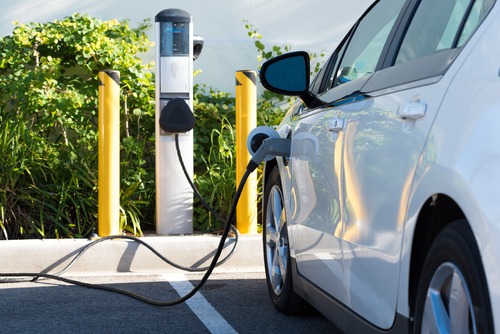Supporters of EV adoption want dedicated funding for utility education and outreach

Two electric vehicle (EV) promotional groups are pushing to get new muscle into teaching consumers about EV ownership. Their idea: that electric utilities should be able to recover the costs, via customers’ electric rates, of EV education and outreach (E&O) programs.
This cost recovery, if approved by state public utility commissions (PUCs), would augment and solidify programs to advance EV ownership. Consistent funding would allow utilities to undertake E&O programs that have the biggest payoffs, e.g. test ride and drives and partnerships with automakers and ride-share companies like Lyft.
This proposal was presented in detail in a webinar on Jan. 12 titled: “The Missing Piece on Meeting Transportation Electrification Goals: Utility Education and Outreach Programs.” The EV host groups were the Alliance for Transportation Electrification (ATE) and Plug In America (PIA). The webinar also introduced and presented a recent white paper on the same topic, written by ATE and PIA but developed with important advisory support from the Edison Electric Institute (EEI), individual utilities, and automakers.
A central thesis for ATE and PIA is that utilities are uniquely and strongly positioned to speak with authority on EV investments and ownership.
“The future of transportation is widely seen to be electric,” comments the EV report, but webinar speakers noted that consumer EV awareness is not fully developed and that current E&O programs are not sufficiently active.
People have many questions about EVs, from charging to actual driving to maintenance. These unknowns keep EV demand in check, according to the webinar presenters. Consider charging, for example. The report cites October 2020 data from Resources for the Future: 22 percent of Americans believe charging EV batteries is extremely difficult, 24 percent believe it is very difficult, and 32 percent perceive it to be moderately difficult.
PUCs must set rates that reflect a utility’s cost of providing service. Rate policy usually seeks to avoid collecting revenue that might pay for relatively limited services or benefits. ATE and PIA, however, say that EV outreach provides broad benefits and qualifies for rate-base support.
Katherine Stainken, policy director for PIA, said during the webinar that EVs provide grid-wide benefits. Off-peak charging allows utility assets to be used more efficiently. This exerts downward pressure on electricity rates, helping the entire grid, Stainken said. She likened EV outreach to ratepayer-supported work on energy efficiency technologies, similarly helpful to all customers and the grid.
Stainken said that committed funding allows utilities’ inherent strengths to bloom. These strengths draw from utilities’ local presence – they are well known and trusted within regional communities, frequently seen as “energy advisors.” Additionally, consumers view utilities, at least regarding EVs, as objective. A utility does not try to sell one vehicle brand over another; rather, a local utility’s information is viewed as helpful to EV adoption in a general sense. Finally, another strength is that utilities have contacts with rural communities and disadvantaged customers, market segments that apparently need specific approaches, according to webinar participants.
California is one state that has allowed utilities to use ratepayer funds for EV advancement, including E&O programs.
Lisa Arellanes, senior manager of eMobility Business Development and Partnerships with Southern California Edison (SCE), described during the webinar a robust outreach program from SCE, from 2012 to 2019, that included ride and drives and auto shows and developing an online tool that could match a customer’s transportation needs and analyze available incentives. SCE’s efforts covered new and used EVs.
She noted that for potential EV customers SCE became a valuable resource. “People wanted our support,” Arellanes said, “not just being ‘sold’ a car. We were seen as a safe group for information.”
SCE addressed questions on many topics, from comparative ownership costs to home charging equipment. Another big issue in California is helping potential fleet owners and their related demands for commercial scale equipment and facilities. “Customers have questions,” Arellanes said, “we need to get answers to them. It’s helpful to have a one stop shop.”
Many state PUCs are now analyzing the pros and cons of rate-payer support for EV programs.
Kellen Schefter, director of Electric Transportation for EEI, the trade association that represents all U.S. investor-owned electric companies, was one of the two co-chairs (along with Stainken) of the ATE/PIA report.
Schefter said EEI tracks the issues drawing attention from PUCs. Requests for funding to support EV development, including E&O programs, are now common requests presented to PUCs across the country. Forty utilities have received funding approvals that focus on EVs, he said.
Again, education and outreach are part of a mix of approved programs. Schefter characterized that funding as strong, enough money to make a difference in regional EV adoption. This is not just a West Coast-East Coast priority. He noted, for example, that Kansas City Light & Power, part of Evergy, will deploy 1,000 EV charging stations, an initiative approved by Missouri’s PUC.
One common theme that emerged from the webinar: it will take a lot of teamwork – and a lot of resources – to scale up EV adoption.
